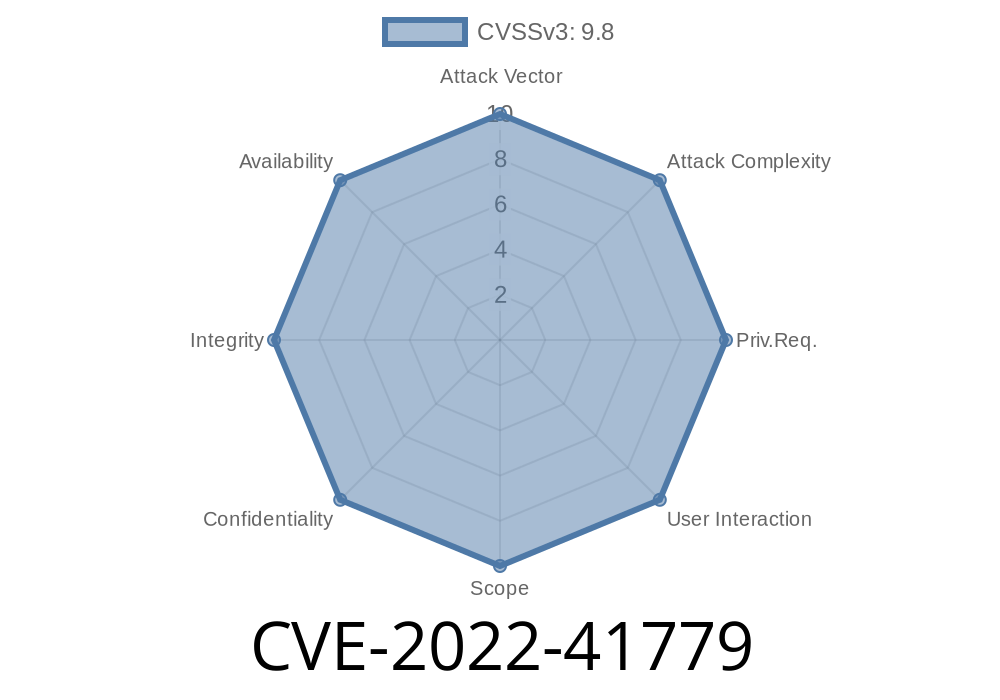Delta Electronics has recently been affected by a critical vulnerability (CVE-2022-41779) which impacts its InfraSuite Device Master software (versions 00.00.01a and prior). This vulnerability has been identified as a deserialization issue that allows an attacker to execute arbitrary code remotely on a vulnerable system. In the following sections, we will explore the details of this vulnerability, its potential impacts, and mitigation strategies.
Description of Vulnerability
Delta Electronics InfraSuite Device Master is a centralized management solution for devices commonly found in data centers, such as Uninterruptible Power Supply (UPS), Environmental Monitoring System (EMS), and more. The software is designed to provide users with an easy-to-use interface to monitor, configure, and control these devices.
The vulnerability (CVE-2022-41779) stems from the way the software deserializes network packets without proper verification. When InfraSuite Device Master connects to an attacker-controlled server, the attacker can send maliciously crafted packets that would then be deserialized and executed by the software. This can result in remote code execution and potentially give the attacker complete control over the targeted system.
Proof of Concept
To demonstrate the potential exploit of this vulnerability, here's a code snippet that highlights the issue:
import socket
import struct
def exploit(target_ip, target_port):
# Craft malicious packet
payload = b'\x00' * 1024 # Add arbitrary malicious data here
# Serialize the payload
serialized_payload = struct.pack('<I', len(payload)) + payload
# Connect to the vulnerable server
sock = socket.socket(socket.AF_INET, socket.SOCK_STREAM)
sock.connect((target_ip, target_port))
# Send the malicious packet to trigger deserialization
sock.send(serialized_payload)
sock.close()
# Example usage:
exploit('192.168.1.100', 12345)
This Python script sends a malicious payload to a target system running Delta Electronics InfraSuite Device Master, causing it to deserialize the payload, potentially leading to remote code execution.
Original References
1. NIST National Vulnerability Database (NVD) Entry: https://nvd.nist.gov/vuln/detail/CVE-2022-41779
2. Delta Electronics Security Advisory: https://www.deltaww.com/AboutUs/NewsDetail?id=202147
Exploit Details
The attacker must have network access to the target system and be able to establish a connection to the InfraSuite Device Master software. Once connected, they can craft malicious packets containing arbitrary code and send them to the server. When deserialized by the software, the code embedded in the packets will be executed, potentially resulting in remote code execution and total compromise of the targeted system.
Mitigation Strategies
Delta Electronics has released a patch for this vulnerability in InfraSuite Device Master version 00.00.02, which can be downloaded here: [Link to Delta’s Download Page]. Users of the software are strongly advised to update to this latest version to protect themselves from this critical threat.
Block unnecessary incoming connections to the InfraSuite Device Master server using firewalls.
2. Restrict access to trusted networks and use Virtual Private Networks (VPNs) or other secure communication methods.
Regularly review logs for any suspicious or unauthorized activity.
4. Keep all software and operating systems up-to-date and patched to ensure they are protected against known vulnerabilities.
Conclusion
The CVE-2022-41779 vulnerability in Delta Electronics InfraSuite Device Master versions 00.00.01a and prior poses a significant risk, as it allows attackers to remotely execute arbitrary code on affected systems. By following the recommended mitigation strategies and applying the updates provided by Delta Electronics, users can protect their systems against this critical threat.
Timeline
Published on: 10/31/2022 20:15:00 UTC
Last modified on: 11/02/2022 13:47:00 UTC
